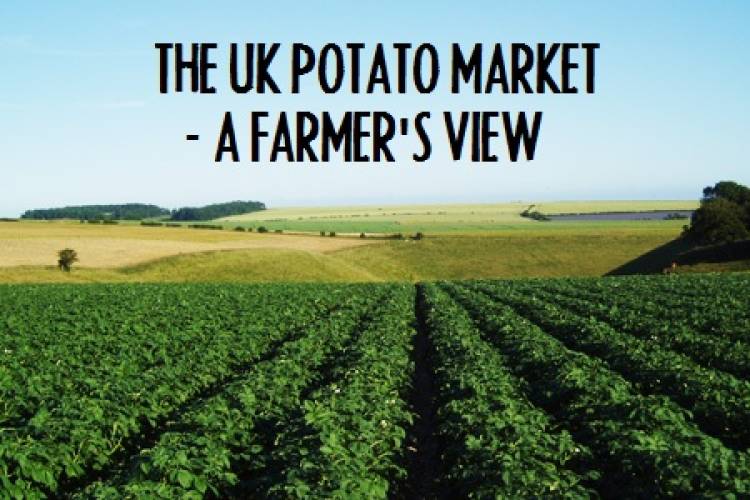The UK potato market – October 2012

I have kept delaying this newsletter because the year has been so different to any that I have experienced before. With lifting much later than usual and nowhere near completion, I am still very uncertain as to where the market might settle. At the end of my last Farmer’s View, I said that “the weather will dictate what happens after that” and it certainly has!
After a very difficult and late planting season, as everyone knows, the summer has been dismally wet and dull. This has affected all arable crops with potatoes being very badly hit. The cold start resulted in some varieties showing “little potato disorder” on the Wolds chalky soil. Even some of those planted at the end of May, when normally the soil has warmed up weeks before, were affected. When the seed potatoes are planted into cold soil they are shocked into a state where they stop sending out a growth shoot and instead produced a few small tubers. The net result is a “gappy” crop which produces very low yields; in some instances only 10% of the volume expected.
Following on from the poor start, the weather produced many more “Smith Periods” which are two consecutive days with warmth and very high humidity creating ideal conditions for potato blight to spread. Growers had to try to increase the fungicide spraying but were often prevented because the excessive wet weather made it impossible for the machines to travel in the fields. The net result was much more blight showing up on crops. Some of the modern fungicides do reduce the likelihood of the fungus spreading from the haulm (ie. all of the stems and leaves) down into the tubers but the damaged leaves reduced yield potential substantially.
The wet and dull season has slowed the growth of all crops so that growers have had to wait for the crops to mature for much longer than is usual. At the moment the harvesting is at least three weeks late and everyone is very concerned that the weather might turn colder and wetter before the crops can be lifted into store. Lifting in cold conditions means that bruising is much more likely and when the soil becomes too wet to allow machines to travel it can be too late in the season for it to dry sufficiently.
The earlier crops showed major problems with “hollow heart” which, as the name suggests, is a growth abnormality where the centre of the potato is hollow. This void is not initially a problem until it soon begins to discolour and eventually rot which is very unpleasant for a consumer if it gets that far through the checking system!
The excessive rain has also caused problems in some areas where the ridges of soil have been washed down so that tubers near the top of the ridge are exposed to light and therefore go green. Also, growth cracks are much more prevalent and both of these problems mean that there are many more potatoes to throw out into the reject bins.
Apart from yields being much lower than usual, another problem is that the crops have produced far fewer larger potatoes so there is an added concern here at Farmhouse because it is a constant struggle to source enough of the larger sizes for baking.
Prices have risen to unprecedented levels because of the lower yields. As more of the crop is harvested, instead of the more common harvest price reduction, the low yields are resulting in prices rising further. At the moment there is no real sign that the market has levelled off and further rises are a real possibility.
There are a few factors which might help the situation, albeit perhaps only to prevent an even more severe shortage. The first is that more potatoes are being imported from Northern Europe than is usual at this time of year. This helps to an extent but not hugely because the European yields are also down and, as is the case in the UK, the area grown was lower than last year so prices of imported are no better than the home grown crop. Another point is that when prices are high the utilisation of the crop improves. As an example, potatoes which in most years would be rejected and go for stock feed because of poor skin quality, may well be used for peeling. One final point, which in the long-term is bad news for the potato industry, is that some consumers move on to other staples when prices go very high so that the demand falls. The only mitigating factor with this issue is that other staples have also increased in price so perhaps the fall in consumption will not materialise.
I wish I could predict where the market will eventually settle but at the moment it is impossible. We badly need an Indian summer so that the growers can harvest the remaining bulk of the crop which is currently still in the ground.
Rob









